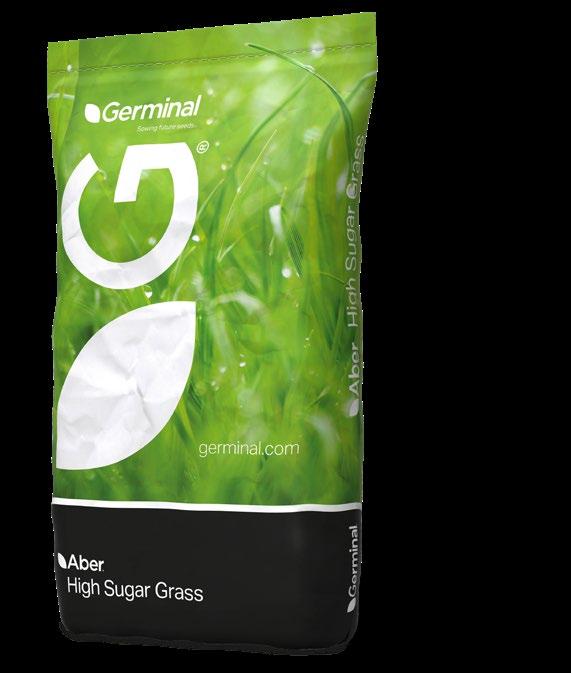
1 minute read
Fig
Aber High Sugar Grass (HSG) range
As the name suggests, the Aber HSG range contains higher levels of water-soluble carbohydrates (sugars), and therefore energy, than conventional ryegrasses. This high level of available energy helps bacteria in the rumen of livestock convert more of the protein in forage into meat and milk. Without enough energy, most forage protein is wasted, producing ammonia and methane. So, not only does the extra energy from high sugar grasses help produce more meat and milk, it reduces the production of these gases.
Advertisement
Aber HSG varieties dominate the most highly-rated varieties for metabolisable energy (ME) yield/ha, a key determinant of livestock performance. Even small increases in ME can produce important increases in milk production and liveweight gain. Milk yields have been seen to rise by 6% and significant liveweight gains shown in both sheep and beef cattle. Choosing mixtures comprising top-ranking Aber HSG varieties is one step towards a more productive and profitable business.
The Aber HSG range includes short, medium and long-term leys with specialist mixtures for cutting and grazing systems, as well as general purpose leys. Aber HSG mixtures are also available for overseeding and for biogas production. Each product contains a carefully selected combination of Aber varieties to fit its specific requirements.
General Purpose
Grazing
Aber HSG 1 Milk and Meat Production Aber HSG 4 Dairy System
Aber HSG 3 Long-Term Grazing AberXtend HSG Extended Grazing Aber HSG Multi Species
Cutting
Overseeding
Aber HSG 2 Early Cut Aber HSG 2 Later Cut Aber HSG 2 Multi Cut Aber HSG Multi Species Aber Red 5 HSG Quality Silage
Aber HSG Short-term Overseeding Aber HSG Long-term Overseeding
Anaerobic digestion Aber HSG for AD Short-term Aber HSG for AD Medium-term Aber HSG for AD Long-term


